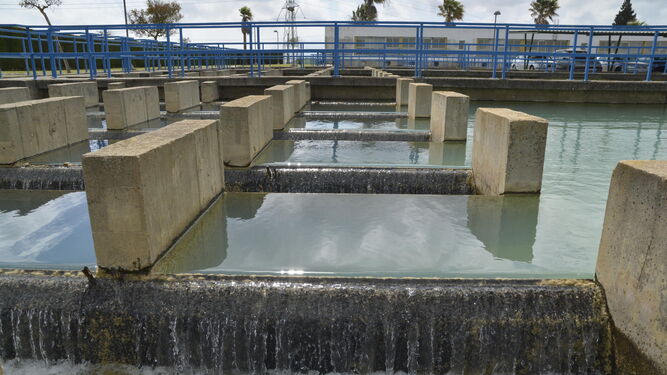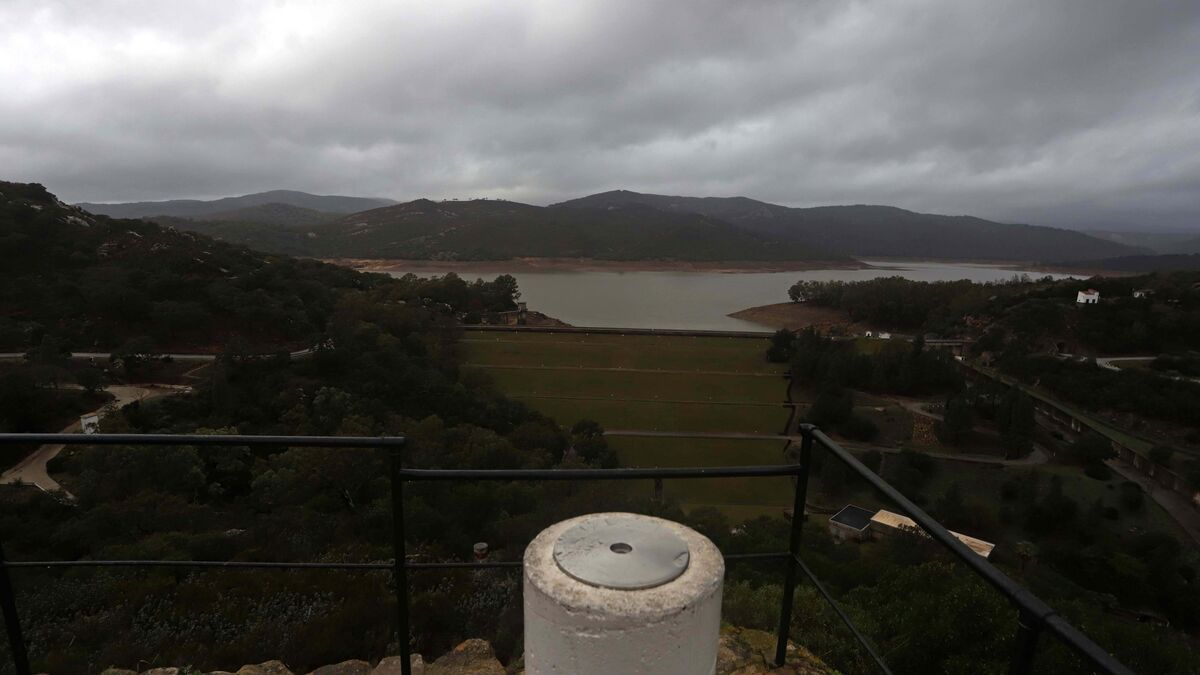The third decree approved by the Andalusian government to combat the effects of drought includes an investment of 4.2 million euros in improvements to the El Cañuelo Drinking Water Treatment Plant (ETAP), the oldest and most important plant in the Campo de Gibraltar area. This facility, located in Los Barrios, receives all the water from the Guadarranque reservoir (also part of Charco Redondo) and supplies all the towns in the Bay area: Algeciras, La Línea, San Roque, and Los Barrios.
The first project will involve the construction of a sludge treatment plant in El Cañuelo for 2.75 million euros. This process was not done before and will prevent episodes of water turbidity, such as those experienced in November of last year, especially in Algeciras and La Línea, or in 2020 in Jimena and San Roque and in 2019 in Tarifa.
Arcgisa explained at the time that "as a result of the lack of rainfall" that was being experienced, the Guadarranque and Charco Redondo reservoirs were at lower levels than normal for that time of year, which meant that the drinking water treatment plants "received water from the lower intakes of these reservoirs" and produced "occasional episodes of discoloration." "The raw water entering the drinking water treatment plants, which comes from both reservoirs, has a high content of iron (Fe) and manganese (Mn), which means that the treated water contains levels of these elements that, while higher than normal and cause discoloration, do not pose any risk to health," he added.
In addition, the Andalusian government includes in the decree as a work of special interest the improvement of the hydraulic and energy efficiency of the pumping stations in the Campo de Gibraltar exploitation system, which also affect El Cañuelo, with 1.45 million euros for measures to prevent water leaks. These measures, according to the Minister of Presidency, Antonio Sanz, during the presentation, will lead to an improvement in the water supply. Specifically, he spoke of an additional 19.5 cubic hectometers of water.
There is also an investment of five million euros for the improvement of hydraulic efficiency and reduction of losses through the replacement of the current San Cristóbal-Cádiz pipeline section from Barrio Jarana-Tres Caminos, in Puerto Real, which benefits Tarifa, Jimena de la Frontera, San Martín del Tesorillo, Castellar de la Frontera, San Roque, Los Barrios, La Línea de la Concepción, and Algeciras and by Cádiz, Puerto Real, San Fernando, Chiclana, and Conil.
"There are still pending works, such as the Gibralmedina dam," said Antonio Sanz, "but the national government, which is not building anything, has to construct it." Despite this assessment of responsibilities, in September 2019, the Andalusian government tendered the technical assistance for the drafting of the project, almost ten years after the Andalusian Water Agency finished drafting the preliminary draft of this major infrastructure. Located on the Guadiaro River, in the municipality of Jimena de la Frontera and very close to San Pablo de Buceite, it would have a storage capacity of about 45 cubic hectometers – the volume will vary depending on the most viable option – and will serve to supply the Campo de Gibraltar area and, in case of emergency, also the western Costa del Sol.
This is a project that was agreed upon by social agents in the area and the government more than 30 years ago and will not see the light of day, at least until 2027. The Regional Government of Andalusia only has jurisdiction over water in 33% of the Andalusian territory, compared to the 67% that falls under the jurisdiction of the State.
Sanz stated that the third drought decree, with a total investment of 163 million euros, will prepare Andalusia for drought structurally, by seeking new water sources and strongly promoting the use of reclaimed water. In the province of Cadiz, 17.2 million euros will be invested in the Guadalete-Barbate Hydrographic Demarcation, with measures such as improving hydraulic efficiency and reducing losses in the transportation infrastructure of the Guadalete System. With an investment of eight million euros, this initiative will benefit the municipalities of Algar, Paterna, Arcos, Puerto Real, Barbate, El Puerto, Benalup-Casas Viejas, Rota, Cadiz, San Fernando, Chiclana, San José del Valle, Chipiona, Sanlúcar, Conil, Trebujena, Jerez, Vejer, and Medina.
In an interview on Antena 3 on Wednesday, the President of the Regional Government of Andalusia, Juanma Moreno, stated that if the lack of rainfall persists in the coming months, the government will "analyze" the situation in September to adopt "restrictions" on urban consumption, affecting irrigation, street cleaning, and pool filling, among other issues. "We hope it rains so we don't have to take painful measures" for the entire population, and therefore, beyond agriculture and livestock production, the two sectors most affected by the drought," said the President.
Drought analysis
The Drought Analysis in Andalusia, prepared by the Regional Ministry of Sustainability, Environment, and Blue Economy, states that the Campo de Gibraltar agricultural region was, as of last March, experiencing moderate rainfall drought (with a value of -0.49).
In a table reflecting the probability of remaining in a drought situation over the next 1, 2, 6, and 12 months, based on existing historical series, the report states that the probability is high in all cases. This is considered when the probability exceeds 66%, and in the region it is 80% for one month, 79% for two months, 80% for three months, and 67% for one year."

